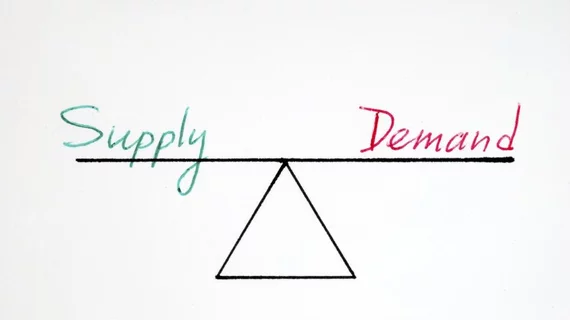Contrast shortage prompts experts to contemplate future supply issues
A new article published on Sept. 1 by the Radiological Society of North America shares valuable commentary from experts in the field pertaining to how the medical industry can prepare for supply shortages in the future.
In the article, experts shared effective strategies their institutions implemented during the iodinated contrast shortage. Although the contrast supply issues have continued to improve since GE’s manufacturing facility in Shanghai resumed operations, another shortage is inevitable, explained Andrew Bierhals, MD, MPH, vice chair of quality and safety and a professor of radiology, medicine, and pediatrics at Washington University in St. Louis.
In regard to planning for future issues, Bierhals suggested that “having predetermined teams that can come together rapidly to discuss and develop workflows for supply chain issues is essential. These teams should consist of supply chain experts as well as representatives from various medical specialties, pharmacy, infection prevention and the hospital administration.”
A Multidisciplinary Approach
Other experts who contributed to the commentary echoed the need for a team approach to shortages, adding that these teams should be multidisciplinary.
David D.B. Bates, MD, an abdominal radiologist and director of computed tomography (CT) at Memorial Sloan Kettering Cancer Center, shared that his institution weathered a significant shortage of contrast shipments. To preserve the contrast supply on hand, Bates said his institution put together an emergency response team that consisted of radiologists, pharmacists, nurses, CT technologists, clinical colleagues, hospital administrators and pharmacists. The pharmacists played a particularly vital role on the team, Bates shared, adding that they were able to repackage available contrast into smaller portions, thus optimizing the use of the supply on hand.
Adjusting Expectations
Although using smaller portions of contrast for each exam is effective for preserving supplies, the images produced can look different or contain less information. This, Lakshmi Ananthakrishnan, MD, UT Southwestern Medical Center in Dallas, is something that radiologists and ordering providers must accept amid shortages, despite the very legitimate concerns that accompany interpreting images with perhaps less information.
“These concerns must be framed in the context of the ICM shortage reality, and radiologists may need to recalibrate interpretations accordingly,” Ananthakrishnan and colleagues explained in special report published in Radiology: Cardiothoracic Imaging.
Analyzing Ordering Behaviors
In addition to radiologists having to adjust their mindsets, the habits of ordering providers could merit changes as well, Ananthakrishnan explained.
“During the contrast shortage, our task force held a town hall for ordering providers to explain the facts,” she said. “We told them how many days of iodinated contrast we had on hand, and that we didn’t know when we were getting more. If we didn’t change how we were using this product, we could run out. We then gave them the autonomy to triage their patients’ imaging needs. They were very responsive.”
The experts were all in agreement that future supply chain issues are inevitable, however, preparing for them ahead of time can help to blunt the impact they have on healthcare.
The full commentary can be viewed here.

